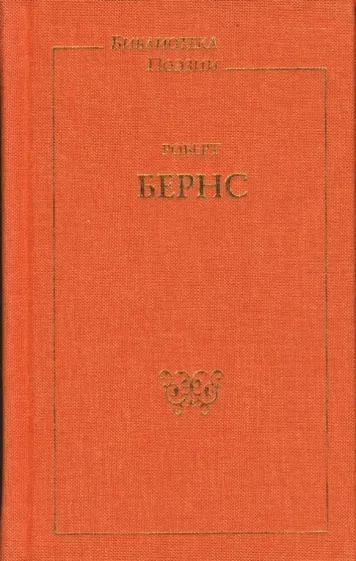Шрифт:
Интервал:
Закладка:
401
Cardini, Europe and Islam, 147; Malcolm, Useful Enemies, 77–78.
402
Malcolm, Useful Enemies, 79.
403
Andrew Hess, ‘The Moriscos, an Ottoman Fifth Column in Sixteenth-Century Spain’, American Historical Review 74, no.1 (1968), 20.
404
Cardini, Europe and Islam, 147.
405
Stephen A. Fischer-Galati, Ottoman Imperialism and German Protestantism, 1521–1555 (Cambridge, MA: Harvard University Press, 1959; New York: Octagon Books, 1972), 117.
406
Carl Max Kortepeter, Ottoman Imperialism During the Reformation: Europe and the Caucasus, New York University Studies in Near Eastern Civilization 5 (New York: New York University Press, 1972), 209, note 107.
407
Kortepeter, Ottoman Imperialism During the Reformation, 241.
408
Процитировано в: Çetin Yetkin, Türk halk hareketleri ve devrimler (Istanbul: Milliyet, 1980), 77–78, цит. по: Yürekli, Architecture and Hagiography in the Ottoman Empire, 35.
409
Ocak, ‘Ideologie ofifcielle et reaction populaire’, 188.
410
Colin Imber, ‘A Note on “Christian” Preachers in the Ottoman Empire’, Osmanlı Araştırmaları 10 (1990): 59–67.
411
Victoria Holbrook, ‘Ibn ‘Arabi and Ottoman Dervish Traditions: The Melâmi Supra-Order (Part One)’, Journal of the Muhyiddin Ibn ‘Arabi Society 9 (1991): 18–35, здесь 24.
412
Ocak, ‘Ideologie ofifcielle et reaction populaire’, 188–189.
413
‘Shaykh Bālī-Effendi on the Safavids’, in Medieval Iran and its Neighbours (London: Varorium Reprints, 1982), 441; см. также: Colin Imber, ‘The Persecution of the Ottoman Shī’ites According to the Mühimme Defterleri, 1565–1585’, Der Islam 56 (1979): 245–273.
414
Marc David Baer, ‘Sultans as Saviors’, in Sultanic Saviors and Tolerant Turks: Writing Ottoman Jewish History, Denying the Armenian Genocide (Bloomington: Indiana University Press, 2020), 30–52.
415
В Израиле она известна как Донна Грация. – Прим. ред.
416
Benjamin Arbel, Trading Nations: Jews and Venetians in the Early Modern Eastern Mediterranean (Leiden, The Netherlands: Brill, 1995), 77–94.
417
Eliyahu Capsali, Seder Eliyahu zuta: Toldot ha-‘Ot’omanim u-Venitsi’ah ve korot ‘am Yisrael be-mamlekhot Turki’yah, Sefarad u-Venitsi’ah (История османов и Венеции, а также евреев в Турции, Испании и Венеции), 1523, ed. Aryeh Shmuelevitz, Shlomo Simonsohn, and Meier Benayahu (Jerusalem: Mekhon Ben-Tsvi, 1975–1983).
418
Doukas, Decline and Fall of Byzantium to the Ottoman Turks, 172.
419
Aryeh Shmuelevitz, ‘Capsali as a Source for Ottoman History 1450–1523’, International Journal of Middle East Studies 9 (1978): 339–344, здесь 339–340.
420
Capsali, Seder Eliyahu zuta, 1:43.
421
Capsali, Seder Eliyahu zuta, 1:10.
422
Capsali, Seder Eliyahu zuta, 1:10. Оригинальный текст книги Пророка Исайи гласит: «Ассирия, жезл Моего гнева, в чьей руке, как посох, Моя ярость! Я посылаю его против народа, который провоцирует Меня, чтобы забрать его добычу, завладеть его добычей и превратить ее в нечто втоптанное, как уличную грязь».
423
Henriette-Rika Benveniste, ‘The Idea of Exile: Jewish Accounts and the Historiography of Salonika Revisited’, in Jewish Communities Between the East and West, 15th–20th Centuries: Economy, Society, Politics, Culture, ed. L. Papastefanaki and A. Machaira (Ioannina: Isnafi, 2016), 31–53, here 39.
424
Capsali, Seder Eliyahu zuta, 2:7.
425
Heinrich Graetz, History of the Jews, trans. B. Löwy (Philadelphia: Jewish Publication Society of America, 1891–1898), 4:559–561.
426
Yosef Hayim Yerushalmi, Zakhor: Jewish History and Jewish Memory (Seattle: University of Washington Press, 1982), 64.
427
Samuel Usque, Samuel Usque’s Consolation for the Tribulations of Israel (Consolaçam ás tribulaçoens de Israel), trans. Martin A. Cohen (Philadelphia: Jewish Publication Society of America, 1964), 231.
428
Sefer divre ha-yamim le-malkhey Tzarefat u-malkhey beyt Ottoman ha-Togar (История королей Франции и королей из династии Османа) (1554–1577).
429
Joseph Ha-Kohen, The Chronicles of Rabbi Joseph ben Joshua ben Meir the Sephardi, trans. C. H. F. Bialloblotzky (London, 1835), 273.
430
Cecil Roth, Doña Gracia of the House of Nasi: A Jewish Renaissance Woman (Philadelphia: Jewish Publication Society of America, 1948), 180.
431
Roth, Doña Gracia of the House of Nasi, 116.
432
Roth, Doña Gracia of the House of Nasi, 117.
433
Giancarlo Casale, The Ottoman Age of Exploration (Oxford: Oxford University Press, 2010), 4–8.
434
Andrew C. Hess, ‘The Evolution of the Ottoman Seaborne Empire in the Age of the Oceanic Discoveries, 1453–1525’, American Historical Review 75, no. 7 (December 1970): 1892–1919, here 1892.
435
Чуть более двух десятилетий назад не было книг, в которых османы упоминались бы как одна из морских держав Средиземноморья и Азии. John Wills Jr., ‘Maritime Asia, 1500–1800: The Interactive Emergence of European Domination’, American Historical Review 98 (1993): 83–105.
436
Seydi Ali Reis, Mirror of Countries, in The Sacred Books and Early Literature of the East, vol. 6, 329–395, ed. Charles F. Horne (New York: Parke, Austin, and Lipscomb, 1917), available online in Internet Medieval Sourcebook, https://sourcebooks.fordham.edu/source/16CSidi1.asp.
437
David Arnold, The Age of Discovery, 1400–1600, 2nd ed. (London: Routledge, 2002), xi.
438
Arnold, The Age of Discovery, 10.
439
Casale, The Ottoman Age of Exploration, 5–6.
- Печать Республики (ЛП) - Сабатини Рафаэль - Исторические приключения
- История Византийской империи. От основания Константинополя до крушения государства - Джон Джулиус Норвич - Исторические приключения / История
- Огненный скит - Юрий Любопытнов - Исторические приключения
- Горацио Хорнблауэр. Рассказы - Сесил Скотт Форестер - Исторические приключения / Морские приключения
- Блеск клинка - Лоуренс Шуновер - Исторические приключения
- Книга без названия - Юрий Валерьевич Литвин - Исторические приключения / Справочники / Фэнтези
- Краткая история Латинской Америки - Джон Чарльз Частин - Исторические приключения
- Прутский поход [СИ] - Герман Иванович Романов - Исторические приключения / Попаданцы / Периодические издания
- Прутский поход - Герман Иванович Романов - Исторические приключения / Попаданцы / Периодические издания
- Османская империя. Шесть веков истории - Оливье Буке - Зарубежная образовательная литература / Исторические приключения / История







